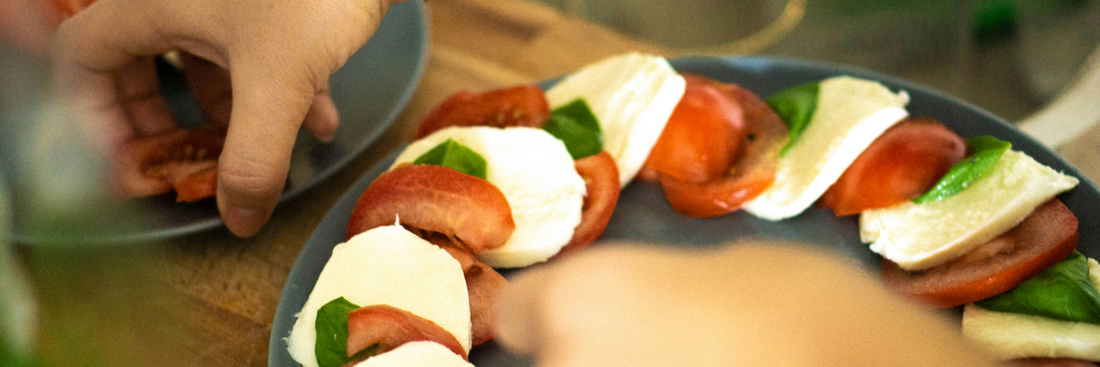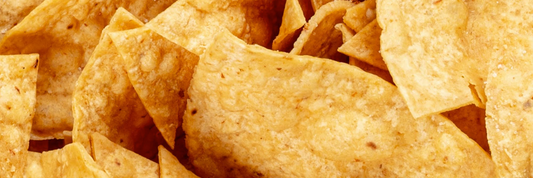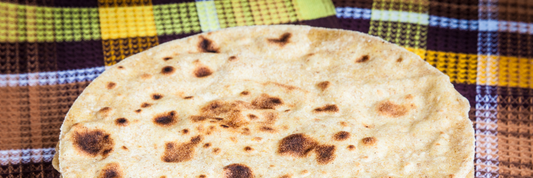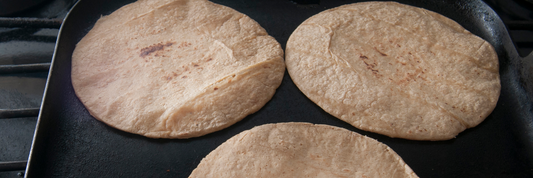What is mozzarella cheese? More than just a pizza topping, mozzarella is a creamy, soft Italian cheese cherished for its delicate texture and mild, milky flavor. From its rich heritage in southern Italy to its many forms fresh, low-moisture, buffalo, burrata, and smoked mozzarella adapts effortlessly to countless dishes. Whether you enjoy it fresh in a Caprese salad or melted to perfection on a pizza, understanding mozzarella’s types, nutritional value, and proper storage will help you savor this iconic cheese at its best.
- What Goes Well with Mozzarella Cheese?
- Homemade Mozzarella: Easy, Delicious, Fresh & Clean
- Mozzarella Cheese Recipes: Delicious Ideas for Every Occasion
What Is Mozzarella Cheese?
Mozzarella cheese is a beloved, creamy Italian cheese known for its soft texture and mild flavor. Originating in southern Italy, it comes in various types fresh, low-moisture, buffalo, burrata, and smoked that each suit different dishes. Understanding mozzarella’s history, nutritional benefits, and proper storage methods helps you enjoy this versatile cheese at its best.

Origin & History of Mozzarella
Mozzarella cheese boasts a rich history rooted deeply in the pastoral traditions of southern Italy, particularly in the Campania region. Its origins date back several centuries, when it was first crafted by local cheesemakers using the milk of the Italian Mediterranean water buffalo. This buffalo milk, richer and creamier than cow’s milk, gave mozzarella its distinctive soft texture and slightly tangy, fresh flavor that quickly became beloved throughout Italy.
The name “mozzarella” is directly tied to the cheese’s traditional production method. It derives from the Italian verb mozzare, meaning “to cut off.” This refers to the artisanal technique used by cheesemakers who would “cut off” pieces of stretched curd by hand to shape fresh mozzarella balls, or bocconcini. The hand-stretched and pulled curds form the hallmark elastic texture that mozzarella is famous for, a process called pasta filata or stretched-curd cheese-making. This method involves heating, kneading, and folding the curds repeatedly until achieving the desired supple consistency.
Mozzarella was originally enjoyed only fresh, soon after production, often consumed within hours or days. This freshness distinguished it from many aged cheeses and made it a staple of simple, rustic Italian cuisine, where it was paired with ripe tomatoes, fresh basil, and drizzles of olive oil, epitomized by dishes like the Caprese Salad.
Over the centuries, mozzarella’s popularity grew beyond its regional origins, particularly following Italian immigration waves in the 19th and 20th centuries, which helped introduce mozzarella to America and other countries. This demand prompted the beginning of industrial-scale production to meet growing market needs. Modern mozzarella is now predominantly made from cow’s milk, which is more widely available and cost-effective for mass manufacturing. Cow’s milk mozzarella is produced in both fresh and low-moisture forms, tailored to different culinary uses from fresh salads to pizza topping.
Despite global industrialization, fresh mozzarella made from water buffalo milk known as Mozzarella di Bufala Campana still retains protected designation of origin (PDO) status. This artisanal cheese is carefully regulated and produced in its native Campania and select neighboring regions, preserving centuries-old traditions and techniques. It remains a culturally treasured symbol of Italian heritage and craftsmanship.
Today, mozzarella bridges tradition and modern food production, available as everything from fresh handmade balls to shredded, processed varieties found in supermarkets worldwide. This balance between artisanal quality and mass accessibility reflects mozzarella’s enduring appeal as a versatile, beloved cheese with a history as rich as its flavor.
What Kind of Mozzarella Cheese Is It?
Mozzarella is a soft, white cheese characterized by its mild flavor and high moisture content, which distinguishes it from many other cheeses. Its delicate, creamy texture and gentle, milky taste make it exceptionally versatile in both fresh and cooked preparations. Traditionally, mozzarella is eaten fresh, prized for its smooth, tender consistency and subtle flavor that complements a wide range of dishes without overpowering them.
The high moisture content of fresh mozzarella gives it a soft, almost elastic texture that feels creamy on the palate, while allowing it to absorb and enhance the flavors of accompanying ingredients such as tomatoes, basil, and olive oil. This freshness is often showcased in salads, appetizers, and simple pairings where the cheese’s natural qualities can shine.
However, mozzarella’s culinary appeal extends beyond fresh consumption. Its excellent melting ability makes it an indispensable cheese in countless cooked dishes, including pizzas, baked pastas like lasagna and baked ziti, casseroles, and stuffed vegetables. When heated, mozzarella transforms by softening and stretching into pleasingly gooey and elastic layers that enhance texture and flavor, making it a favorite among home cooks and professional chefs alike.
Mozzarella comes in an assortment of forms to accommodate diverse cooking needs and presentation styles. It is commonly sold as:
- Balls (Bocconcini or Ciliegine): Small to medium-sized soft spheres ideal for fresh consumption, salads, and antipasto platters.
- Logs or Blocks: Larger shapes often sliced for sandwiches or melted in cooked dishes.
- Pearls: Tiny, bite-sized mozzarella pieces perfect for salads and garnishes.
- Shredded Mozzarella: Pre-shredded varieties convenient for sprinkling on pizzas, pastas, and casseroles, prized for uniform melting.
- Smoked Mozzarella: A variation that adds a subtle smoky flavor while retaining mozzarella’s creamy texture, offering a flavorful twist for both raw and cooked dishes.
Together, these forms highlight mozzarella’s adaptability across fresh, cooked, and even specialty preparations. Whether you seek the delicate softness of a fresh mozzarella ball on a Caprese salad or the melty stretch of shredded mozzarella atop a piping-hot pizza, mozzarella cheese fits seamlessly into countless culinary applications, celebrated globally for its creamy texture, mild flavor, and unparalleled versatility.
Types of Mozzarella
Mozzarella cheese is beloved worldwide for its versatility, unique textures, and distinctive flavors. Understanding its different types can elevate your culinary creations, whether you’re preparing fresh salads, melting it over a pizza, or crafting gourmet sandwiches. Below, we explore the main types of mozzarella each with its own characteristics and best uses.
Read more: Types of Mozzarella Cheese – A Complete Expert Guide

Fresh Mozzarella
Fresh mozzarella is known for its high moisture content, which typically exceeds 60%, giving it a soft, tender, and slightly springy texture. This form of mozzarella is traditionally stored in a brine or whey solution to maintain its freshness and delicate flavor. Its creamy, milky taste and soft consistency make it an excellent choice for dishes that highlight its fresh qualities rather than prolonged heating.
- Ideal uses:
Fresh mozzarella shines in classic Italian dishes like Caprese salad, where its mild flavor pairs perfectly with ripe tomatoes, fragrant basil, and extra virgin olive oil. It is also a favorite for paninis and sandwiches, providing a luscious, soft bite without overwhelming other ingredients. Although fresh mozzarella can be used as a pizza topping, it’s best added towards the end of cooking to avoid melting too much moisture that can make the crust soggy. - Serving tips:
Available in various sizes, from large balls to small pearls (perline), fresh mozzarella requires gentle slicing to preserve its delicate structure. Pair it with herbs, fruity olive oil, or light vinaigrettes for a simple yet sophisticated taste experience.
Low-Moisture Mozzarella
Low-moisture mozzarella contains significantly less water, usually around 45-52% moisture resulting in a firmer, denser cheese that melts beautifully without releasing excess liquid. This type is commonly found shredded or in blocks and boasts a longer shelf life compared to its fresh counterpart.
- Culinary advantages:
Thanks to its lower moisture, low-moisture mozzarella is the quintessential cheese for pizzas, baked pastas, and casseroles. It stretches attractively when melted, producing that familiar gooey texture adored in many cooked Italian-American dishes. Its flavor is generally saltier and more concentrated, which holds up well against bold tomato sauces and spices. - Storage & versatility:
Because of its firmer nature and longer shelf life, this mozzarella is a kitchen staple for everyday cooking. It’s readily available pre-shredded, making it convenient for quick meal prep while providing consistent meltability and flavor.
Buffalo Mozzarella (Mozzarella di Bufala Campana)
Buffalo mozzarella is crafted exclusively from the rich milk of Mediterranean water buffalo, primarily in the Campania region of Italy. This cheese is protected under the European Union’s Protected Designation of Origin (PDO) status, ensuring authentic traditional production methods.
- Flavor and texture:
The higher fat content of buffalo milk produces a creamier, softer mozzarella with a slightly tangier and more complex flavor profile compared to cow’s milk varieties. The result is a luscious cheese bursting with dairy richness and a subtle sweetness balanced by mild acidity. - Best applications:
Served fresh and chilled, buffalo mozzarella is a premium choice for elevating salads, antipasti, and simple dishes where its lush texture and flavor can stand front and center. Its smooth creaminess pairs wonderfully with high-quality olive oil, fresh herbs, and ripe tomatoes.
Burrata
Burrata takes mozzarella indulgence to another level; it consists of a delicate mozzarella shell encasing a decadent filling of fresh cream and soft cheese curds. This structure creates a rich, buttery interior that literally oozes out upon slicing.
- Serving recommendations:
Best enjoyed fresh and at room temperature, burrata is a luxurious cheese ideal for gourmet appetizers and elegant salads. It complements fresh vegetables, crusty artisan bread, and drizzles of olive oil or balsamic reduction beautifully. - Cooking considerations:
Due to its creamy center and high moisture, burrata is less suitable for direct cooking or melting and is best appreciated raw to preserve its luscious texture.
Smoked Mozzarella (Scamorza)
Smoked mozzarella, commonly called scamorza, is a semi-firm cheese distinguished by its smoky aroma and flavor, achieved through traditional wood smoking techniques. It usually has a golden-brown rind with a firmer texture than fresh mozzarella.
- Flavor profile and uses:
The smoky notes add depth and character, enhancing savory dishes. Smoked mozzarella melts well but also stands up nicely to grilling, making it perfect for panini sandwiches, pizza toppings, or as part of an antipasto platter. - Texture and preparation:
Its firmer body allows easy slicing and incorporation into dishes requiring a more robust cheese that adds both flavor and texture contrast.
Nutritional Profile and Health of Mozzarella
Mozzarella cheese is not only a culinary favorite but also a nutritious cheese option that offers several health benefits when consumed in moderation. Understanding its nutritional content can help you make informed dietary choices, whether you are a health-conscious eater or simply seeking to balance flavor with nutrition.

Rich Source of Protein and Calcium
Mozzarella is notably high in protein, which plays a vital role in muscle repair, immune function, and satiety. A typical 1-ounce (28-gram) serving of mozzarella provides approximately 6 to 7 grams of protein, making it an excellent source for vegetarians seeking to meet their protein needs.
Calcium, another significant nutrient found in mozzarella, is essential for maintaining strong bones and teeth, supporting nerve function, and aiding muscle contraction. Mozzarella contributes roughly 14–20% of the daily recommended calcium intake per serving, promoting overall bone health and helping prevent osteoporosis when included as part of a balanced diet.
Vitamins Present in Mozzarella
In addition to protein and minerals, mozzarella contains key fat-soluble and water-soluble vitamins that support various bodily functions:
- Vitamin B12: Crucial for nerve health and the production of red blood cells, mozzarella provides a valuable source of this vitamin, especially for individuals who do not consume meat or fish.
- Vitamin A: Important for vision, immune system function, and skin health, vitamin A is present in moderate amounts.
- Vitamin D: While not a major source, mozzarella contains small amounts of vitamin D, which aids calcium absorption and supports immune health.
Moderate Fat and Sodium Content
Mozzarella cheese contains moderate levels of fat and sodium, nutritional components that require mindful consumption, especially for those monitoring heart health. Fresh mozzarella typically has a lower fat and sodium content compared to low-moisture or aged varieties, making it a preferable option for a lighter diet.
- The fat content contributes to mozzarella’s creamy texture and rich flavor, primarily consisting of saturated fats, which should be balanced with overall dietary fat intake.
- Sodium levels are moderate but can vary depending on the processing method and brining, so choosing fresh mozzarella or rinsing brined cheese can reduce sodium intake.
Probiotic Properties in Unprocessed Mozzarella
Certain versions of mozzarella, particularly fresh and minimally processed types, may retain beneficial probiotic bacteria. These probiotics support gut health by promoting a balanced intestinal microbiome, improving digestion, and enhancing the immune response. Including fresh mozzarella as part of a diet rich in fermented foods can contribute positively to digestive wellness.
Suitable for Vegetarians When Made with Microbial Rennet
Traditional mozzarella production often uses animal-derived rennet, but many commercial and artisanal producers now use microbial or vegetable-based rennet. This adaptation makes mozzarella an excellent cheese option for vegetarians who avoid animal rennet.
When selecting mozzarella for vegetarian diets, always check labels or product descriptions to confirm the type of rennet used. Choosing microbial rennet mozzarella ensures compliance with vegetarian standards without sacrificing taste or texture.
Storage of Mozzarella Cheese
Proper storage is essential to maintain the freshness, flavor, and texture of mozzarella cheese. Different types of mozzarella require specific handling techniques to ensure they stay at their best for as long as possible. Whether you have fresh mozzarella with its delicate moisture-rich nature or low-moisture mozzarella designed for longer shelf life, understanding the best storage practices can help you reduce waste and enjoy quality cheese in your recipes.
Reach out and we’ll recommend the best eco-packaging solutions for your cheese within 24 hours.

Fresh Mozzarella Storage
Fresh mozzarella is highly perishable due to its elevated moisture content and natural brine packaging. To preserve its delicate softness and creamy flavor:
- Store in original brine or salted water: If you purchase fresh mozzarella sold in liquid, keep it submerged in its original brine or saltwater solution inside a sealed container. This environment helps prevent the cheese from drying out and maintaining its soft texture.
- Refrigeration: Fresh mozzarella should be stored in the refrigerator at temperatures between 34°F to 40°F (1°C to 4°C). Avoid freezing fresh mozzarella as it greatly alters the texture and makes it less enjoyable to eat fresh.
- Consume within 5–7 days: For optimal taste and texture, fresh mozzarella is best eaten within a week of opening or purchase. Beyond this period, it may lose its creamy quality and begin to spoil.
- Eco-friendly storage: To reduce plastic waste and promote sustainability, consider transferring fresh mozzarella to reusable paper food containers or eco-safe bowls with airtight lids instead of single-use plastic wrap. This also helps maintain adequate moisture control while being environmentally responsible.
Low-Moisture Mozzarella Storage
Low-moisture mozzarella is firmer and less perishable compared to fresh mozzarella, but proper storage still influences quality and shelf life.
- Wrap in parchment or wax paper: Before storing, wrap the cheese in breathable parchment or wax paper. This allows the cheese to breathe while preventing it from drying out.
- Place in kraft boxes: After wrapping, place the mozzarella in kraft paper boxes or other eco-friendly packaging to provide a secondary protective layer while minimizing plastic use.
- Refrigerate promptly: Store low-moisture mozzarella in the fridge at the same ideal temperature range (34°F to 40°F). When properly wrapped and refrigerated, it can last up to 3 weeks without significant loss of flavor or texture.
- Avoid airtight plastic containers for long-term: Unlike fresh mozzarella, low-moisture mozzarella does better with some airflow to maintain its texture, so avoid tightly sealed plastic bags or containers unless consuming within a few days.
Freezing Mozzarella
Freezing mozzarella is a useful technique for extending its usability, especially if you have surplus cheese or want to prepare portions ahead of time. However, freezing affects mozzarella’s texture, so it’s best suited for cooking applications after thawing.
- Shred or portion first: Before freezing, shred or cut mozzarella into portions that suit your future recipe needs. This makes it convenient to thaw only the amount required without waste.
- Use eco-friendly, freezer-safe containers: Opt for reusable, freezer-safe glass or BPA-free plastic containers, or compostable freezer bags that reduce plastic pollution, preserving both the environment and cheese quality.
- Storage duration: Frozen mozzarella will maintain usable quality for up to 6 months. Beyond this, it may start to develop off-flavors or textural changes.
- Best for cooking use after thawing: Because freezing alters the moisture balance, thawed mozzarella is best reserved for melted cheese dishes like pizzas, casseroles, or baked pastas, where textural changes become less noticeable.
Conclusion
Mozzarella remains a kitchen favorite due to its unique flavors and textures from fresh and creamy to melt-friendly and smoky. It’s rich in protein and calcium, offering nutritional value alongside delicious taste. Storing mozzarella properly whether in brine, wrapped carefully, or frozen preserves its freshness, ensuring you get the most from every bite. Mastering these essentials lets you enjoy authentic mozzarella in all your favorite recipes.







